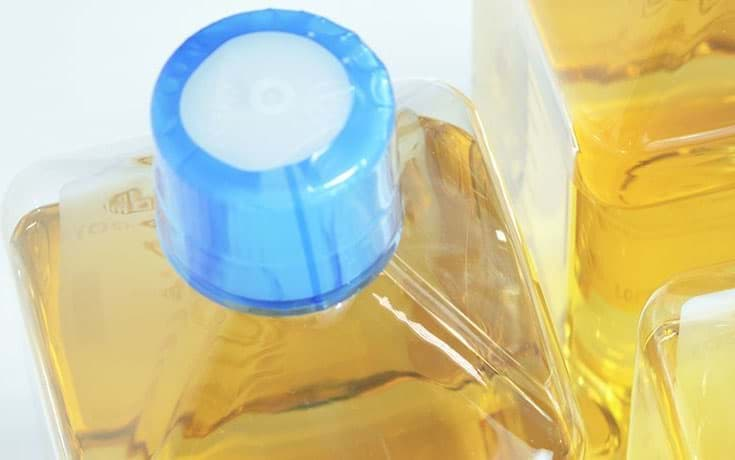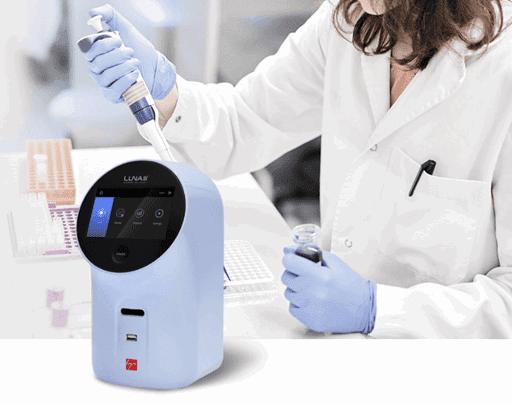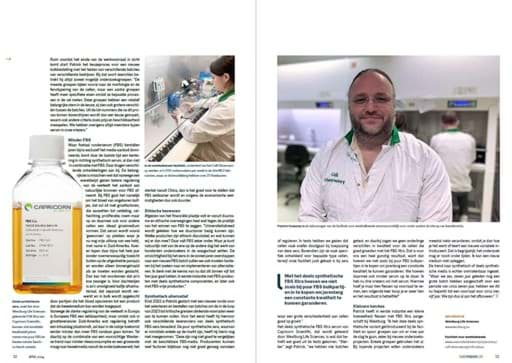
5 reasons to switch to serum-free culture media
Get your cell culture conditions as real as possible
To use cell culture as an actual model, we offer best-practice solutions that mimic physiological conditions.
Learn more about
In summary
- Why is Fetal bovine serum used?
- What causes cell culture problems?
- How do you recognize it?
- Our advice to solve these cell culture media problems.
What is bias?
Why is Fetal bovine serum used?
Cell culture models mimic physiological conditions, cells need vitamins, growth factors, and other nutrients to grow and proliferate. Serum from fetal bovines (FBS) offers these nutrients to cells. Together with cell culture media, it has advanced the cell biology research field tremendously. Still, unfortunately, FBS is a poorly defined culture medium additive as levels of vitamins, hormones, growth factors, proteins, and components vary considerably between batches leaving you without any control of these elements.The solution to achieve ideal cell culture conditions without FBS and eliminate batch-testing and tiresome price negotiations.

Causes
What causes cell culture problems?
The poorly defined nature and high lot-to-lot variability make fetal bovine serum liable for cell culture purposes. Poor reproducibility or misinterpretation of results is unwanted. The drivers behind these undesired outcomes are:- The concentration of serum proteins is generally much higher than the protein produced by mammalian cells in vivo. The abundantly available nutrients in FBS overfeed the cells, they become too large, proliferate faster, and the morphology is atypical.
- Serum proteins are a significant contaminant and may unwantedly interact with your component of interest.
- Serum components may also bind, degrade or otherwise interact with substances added to the medium. These factors may influence the observed effect and lead to false conclusions.
- If the target protein is related to a serum protein, you can't separate the two easily.
- On top of that, harvesting serum from unborn calves in slaughterhouses poses ethical concerns. Serum contamination with viruses, bacteria, fungi, or BSE has been a concern for many years.
Recognizing
How do you recognize it?
FBS overflows the cells in culture with nutrients, resulting in inflated cells, changes in morphology, and ultra-fast proliferation. All factors that do not represent the physiological conditions you want to mimic.

Our solutions
Our advice to solve these cell culture media problems
Medium without the need to add FBS or other serum is the ultimate solution. Serum-free cell culture media are balanced solutions with chemically-defined nutrient composition, eliminating FBS's addition to culture cells in-vitro mimic in-vivo conditions considerably.
The composition of the serum-free medium is precisely known and defined, ensuring lot-to-lot consistency and eliminates the need to screen new serum lots. For biopharmaceutical manufacturers, the downsides of FBS already led to the elimination of all animal-derived components from the manufacturing process and switching entirely to serum-free media solutions.
- For research, serum-free media also benefit from eliminating the risk of infectious agents while supporting the growth of a wide range of cell types.
- Serum-free medium has fewer possible interfering factors due to low nutrient levels. Defining the components makes it possible to find root causes when problems occur in the research setting.
- In serum-free media, the protein concentration is low, resulting in low levels of contaminants. As a result, the target protein is easier to purify with higher recovery.
- Serum-free alternatives better serve animal welfare.
Despite the significant benefits of serum-free media described above, extra measures improve the performance of serum-free alternatives. First, it takes time to adopt a particular cell line to a serum-free medium. The cells will have to be weaned from serum gradually, and some cell lines may require the addition of growth factors, pluronic F68 or Normally FBS contains Trypsin inhibitors. When switching to serum-free alternatives, these inhibitors are not present. So keep in mind to use a trypsin neutralizer in case you use trypsin for cell detachment.
Finally, adherent cell lines require an extracellular matrix on the culture surface, which serum provides. Therefore, the culture plates should be pre-coated with fibronectin, laminin, or another suitable alternative.
The commercial availability of serum-free medium and serum substitutes has made it easy to leave serum behind. As a result, serum-free media deserve serious consideration for the culture of a wide variety of cell types to take your cell culture closer to in-vivo situations.
CHO|ONE E, Expression Medium, without Insulin, without L-Glutamine, with Pluronic - 500 ml
CHO|ONE Starter Kit - 1 Kit
VeroVax, Serum-Free Medium, without L-Glutamine - 1000 ml
HybridomaPlus, protein-free hybridoma medium, with L-Glutamine - 500 ml
Pro293a Medium, for adherent cells, with Pluronic, FFM, 1L
HEK|ONE S, chemically defined medium for stable expression, without L-Glut, with Growth Hormones
Our news

New Implen OD600 now available: Fast and accurate determi...
October 2024 - Implen launches the OD600 for accurate determination of cell density at 600 nm. Order it now at Westburg Life Sciences

Introducing the New LUNA-III™ Automated Cell Counter: Ano...
October 2024 - Logos Biosystems launches the LUNA-III™ automated cell counter. Order it now at Westburg Life Sciences

Leiden Cell Observatory switches to partly synthetic seru...
April 2024 - This has several advantages. Lab manager Patrick Voskamp shares his experience in this article







